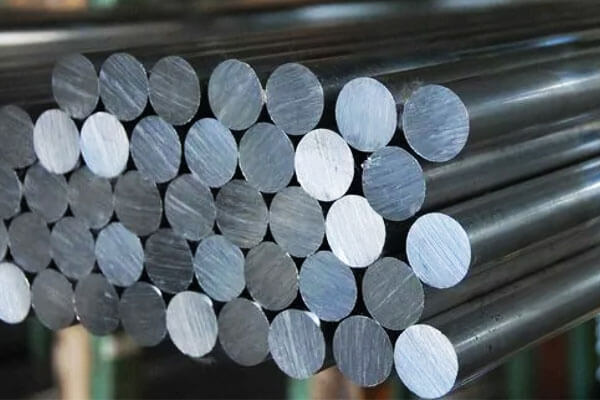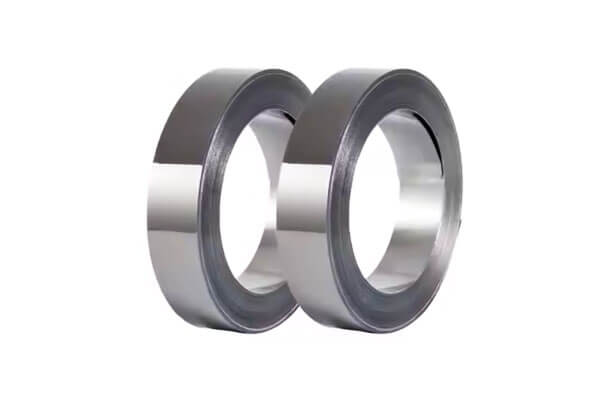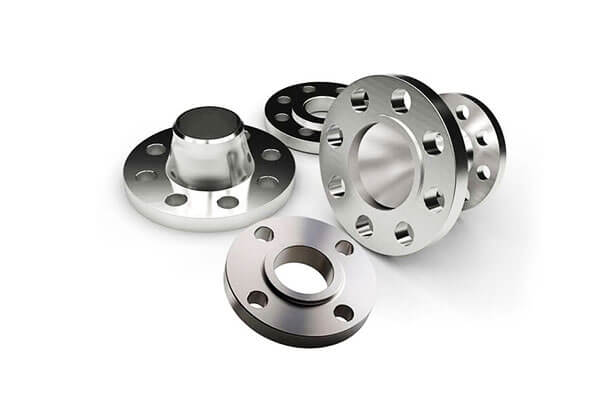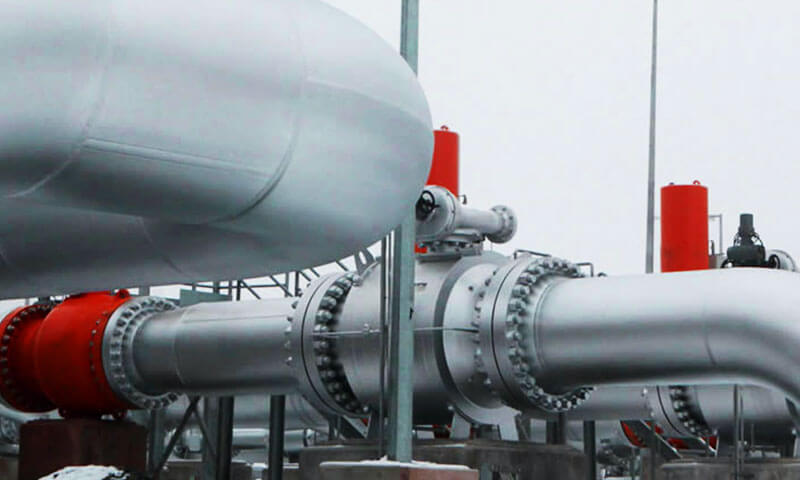1. Кіріспе
Nickel-based alloys have long been the foundation of high-performance materials used in extreme environments.
Their ability to withstand high temperatures, тотықтыру, and mechanical stress makes them indispensable in аэроғарыш, Электр қуатын өндіру, және өнеркәсіптік қосымшалар.
Among these alloys, Nickel Alloy 75 (2.4951) has earned a reputation for its exceptional thermal stability, Тұрақты төзімділік, және коррозияға төзімділік
Originally developed in the 1940s for the Whittle jet engine turbine blades, this alloy has continued to prove its reliability and versatility across multiple industries.
Its unique combination of Механикалық беріктік, Жылу тұрақтылығы, және дайындық жеңілдігі makes it an attractive choice for applications requiring long-term durability in high-temperature environments.
This article provides an in-depth technical analysis of Nickel Alloy 75 (2.4951), covering:
- Chemical composition and microstructure, explaining how each element contributes to its superior properties.
- Physical, thermal, and mechanical characteristics, detailing its performance under extreme conditions.
- Manufacturing techniques and processing challenges, highlighting the best fabrication methods.
- Industrial applications and economic feasibility, demonstrating its widespread use.
- Future trends and technological advancements, exploring the next phase of alloy development.
By the end of this discussion, readers will have a comprehensive understanding of Alloy 75 and why it remains a preferred material for demanding engineering applications.
2. Химиялық құрамы және микроқұрылым
Primary Constituents and Their Functions
Nickel Alloy 75 (2.4951) is a nickel-chromium alloy designed for moderate high-temperature applications.

The following table outlines its key alloying elements and their contributions to material performance:
| Элемент | Өнімді (%) | Қызмет ету |
|---|---|---|
| Никель (-Да) | Баланс (~75.0%) | Provides oxidation and corrosion resistance, ensures thermal stability. |
| Хромий (Кр) | 18.0–21.0% | Enhances oxidation and scaling resistance, strengthens the alloy. |
| Титан (-Ден) | 0.2–0.6% | Stabilizes carbides, improves high-temperature strength. |
| Көміртегі (Б) | 0.08–0.15% | Forms carbides to enhance hardness and creep resistance. |
| Үтік (Ақысу) | ≤5.0% | Adds mechanical strength without compromising corrosion resistance. |
| Кремний (Жіне), Марганец (М.на), Мыс (Друг) | ≤1.0%, ≤1.0%, ≤0.5% | Provide minor processing benefits and oxidation resistance. |
Microstructural Analysis
- Та ФСК (Бет әлпеті бар текше) Кристалл құрылымы ensures high ductility and fracture toughness, which is essential for thermal cycling applications.
- Titanium and carbon form carbides (TiC, Cr₇C₃), significantly increasing the alloy’s creep strength at elevated temperatures.
- Microscopic examination (SEM, TEM, and XRD analysis) confirms that uniform grain structures contribute to improved fatigue resistance.
3. Physical and Thermal Properties
Basic Physical Properties
- Тығыздық: 8.37 g / cm³
- Балқу диапазоны: 1340-1380 ° C
- Электрлік кедергісі: 1.09 mm²/m (higher than stainless steel, making it ideal for heating elements)
Thermal Characteristics
| Мүлік | Бағалау | Маңыз |
|---|---|---|
| Жылу өткізгіштік | 11.7 W/m·°C | Ensures efficient heat dissipation in high-temperature environments. |
| Нақты жылу сыйымдылығы | 461 J/kg·°C | Improves thermal stability. |
| Жылу кеңеюінің коэффициенті (Табғы) | 11.0 µm/m·°C (20-100 ° C) | Maintains structural integrity under thermal cycling. |
Oxidation Resistance and Thermal Stability
- Sustains oxidation resistance up to 1100°C, making it ideal for gas turbines and exhaust systems.
- Maintains mechanical strength under prolonged high-temperature exposure, reducing the risk of deformation.
Magnetic Properties
- Low magnetic permeability (1.014 -та 200 Oersted) ensures suitability for applications requiring minimal electromagnetic interference.
4. Mechanical Properties and High-Temperature Performance of Nickel Alloy 75
This section provides a comprehensive analysis of Nickel Alloy 75 Механикалық қасиеттері, behavior under extreme conditions, and testing methodologies to evaluate its long-term performance.
Созылу күші, Бергі күш, and Elongation
Tensile properties define the alloy’s ability to withstand static and dynamic loading without experiencing permanent deformation or failure.
Nickel Alloy 75 maintains high tensile strength and reasonable ductility across a wide temperature range.

Key Tensile Properties
| Температура (° °) | Созылу күші (МПа) | Бергі күш (МПа) | Іуу (%) |
|---|---|---|---|
| Room Temp (25° °) | ~600 | ~275 | ~40 |
| 760° ° | ~380 | ~190 | ~25 |
| 980° ° | ~ 120 | ~60 | ~10 |
Observations:
- High strength at room temperature ensures excellent load-bearing capacity.
- Gradual reduction in tensile strength with increasing temperature is expected due to softening effects.
- Ductility remains sufficient at elevated temperatures, allowing for stress redistribution without brittle failure.
These properties make Nickel Alloy 75 suitable for components exposed to high temperatures and mechanical stress, such as turbine blades, exhaust ducts, and heat exchanger parts.
Creep Resistance and Long-Term Load Stability
Creep is a critical factor for materials used in continuous high-temperature applications. It refers to the slow, time-dependent deformation under constant stress.
The ability to resist creep determines the longevity and reliability of Alloy 75 in extreme environments.
Creep Performance Data
| Температура (° °) | Stress (МПа) | Time to 1% Creep Strain (hrs) |
|---|---|---|
| 650° ° | 250 | ~10,000 |
| 760° ° | 150 | ~8,000 |
| 870° ° | 75 | ~5,000 |
Негізгі түсініктер:
- Strong creep resistance at moderate temperatures (650–760°C) extends component lifespan in jet engines and power plant turbines.
- At 870°C, creep rate increases significantly, requiring careful design considerations for prolonged exposure.
- Қорытпа 75 outperforms conventional stainless steels, making it a more reliable choice for high-temperature engineering applications.
To further enhance creep resistance, manufacturers often optimize grain size and perform controlled heat treatments, ensuring microstructural stability during prolonged use.
Fatigue Strength and Fracture Toughness
Fatigue Resistance Under Cyclic Loading
It is a major concern in components subjected to repeated thermal cycling and mechanical stress, such as those in aerospace propulsion systems and gas turbines.
Қорытпа 75 экспонаттар strong fatigue resistance, preventing premature failure due to cyclic loading.
| Температура (° °) | Stress Amplitude (МПа) | Cycles to Failure (x10⁶) |
|---|---|---|
| Room Temp (25° °) | 350 | ~10 |
| 650° ° | 250 | ~6 |
| 760° ° | 180 | ~4 |
Fracture Mechanics and Crack Propagation
Nickel Alloy 75’s fracture toughness is relatively high, preventing апатты сәтсіздік due to crack initiation and propagation.
Дегенмен, microstructural defects, carbide precipitation, and prolonged thermal exposure can influence crack growth rates.
- Intergranular and transgranular fracture modes have been observed in fatigue testing, depending on temperature and stress levels.
- Optimized grain boundary strengthening techniques (via controlled cooling rates and minor alloying additions) жетілдіру Жарық қарсылығы.
Thermal Stability and Oxidation Resistance
Nickel Alloy 75 is designed for oxidation resistance up to 1100°C, making it suitable for components in combustion environments and high-temperature reactors.
Key Thermal Properties
| Мүлік | Бағалау | Маңыз |
|---|---|---|
| Жылу өткізгіштік | 11.7 W/m·°C | Allows heat dissipation in high-temperature applications. |
| Нақты жылу сыйымдылығы | 461 J/kg·°C | Ensures thermal stability. |
| Oxidation Limit | 1100° ° | Provides excellent surface protection. |
| Термиялық кеңейту коэффициенті (20-100 ° C) | 11.0 µm/m·°C | Reduces thermal stress during heating and cooling cycles. |
Oxidation and Surface Stability
- Хромий (18–21%) forms a stable oxide layer, protecting the alloy from high-temperature degradation.
- Low sulfur and phosphorus content minimizes embrittlement in thermal cycling applications.
- Compatible with thermal barrier coatings (TBCs) and aluminized coatings to further enhance oxidation resistance.
5. Manufacturing and Processing Technologies of Nickel Alloy 75
Nickel Alloys – Alloy 75 is widely used in high-temperature applications,
necessitating precise manufacturing and processing techniques to maintain its Механикалық тұтастық, Жылу тұрақтылығы, and oxidation resistance.
This section explores the primary fabrication methods, heat treatment procedures, welding challenges,
and surface finishing technologies that enhance the alloy’s performance in demanding environments.
Primary Fabrication Techniques
Manufacturing Nickel Alloy 75 components involves кастинг, соғу, илемдеу, және өңдеу, each with specific benefits depending on the application.
Кастинг
- Инвестициялық құю is commonly used to produce complex aerospace components, Турбина пышақтары, and exhaust parts.
- Sand casting and centrifugal casting are preferred for large-scale industrial furnace and heat exchanger components.
- Қиартшалар: High-temperature solidification can lead to шөгінділер, requiring precision control of cooling rates.
Forging and Rolling
- Hot forging enhances grain structure and mechanical properties, Бұл үшін өте ыңғайлы load-bearing components.
- Cold rolling is used to manufacture thin sheets and strips, ensuring uniform thickness and surface finish.
- Жамандық:
-
- Астық құрылымын тазартады → Improves mechanical strength.
- Reduces internal defects → Enhances fatigue resistance.
- Enhances workability → Prepares alloy for subsequent machining.
Machining Characteristics
Nickel Alloy 75 presents moderate өңдеу difficulty Оған байланысты high work hardening rate and toughness.
| Machining Property | Effect on Processing |
|---|---|
| Жұмыс қатаю | Cutting speeds must be optimized to minimize tool wear. |
| Жылу өткізгіштік (Аласа) | Generates excessive heat during machining. |
| Chip Formation | Requires sharp cutting tools with high thermal resistance. |
Best Machining Practices:
- Пайдалану carbide or ceramic cutting tools to handle the alloy’s toughness.
- Employ high-pressure coolant systems to manage heat buildup.
- Оңтайландыру cutting speeds (30–50 m/min) and feed rates to prevent work hardening.

Heat Treatment and Thermal Processing
Heat treatment significantly influences the Механикалық қасиеттері, stress resistance, and microstructural stability of Nickel Alloy 75.
Key Heat Treatment Processes
| Өңдеу | Температура (° °) | Мақсат |
|---|---|---|
| Ақша салу | 980–1065°C | Softens the material, relieves stress, and improves workability. |
| Solution Treatment | 980–1080°C | Dissolves carbide precipitates, homogenizes the microstructure. |
| Aging | 650–760°C | Enhances creep resistance and high-temperature strength. |
Heat Treatment Advantages:
- Improves grain refinement, enhancing fatigue strength.
- Reduces internal residual stresses, minimizing distortion in components.
- Enhances creep resistance, ensuring longevity in high-temperature applications.
Welding and Joining Procedures
Nickel Alloy 75 can be welded using various methods, бірақ controlling heat input and preventing carbide precipitation is crucial for maintaining mechanical integrity.
Дәнекерлеудің қиындықтары:
- Cracking Risk: High thermal expansion increases residual stress and hot cracking susceptibility.
- Oxidation Sensitivity: Requires inert gas shielding (Argon, Helium) to prevent surface contamination.
- Карбид-жауын-шашын: Excessive heat input can lead to carbide formation, reducing ductility and toughness.
Recommended Welding Methods:
| Welding Process | Артықшылықтары | Қиартшалар |
|---|---|---|
| TIG дәнекерлеу (Gtaw) | Precise control, minimal heat input | Slower than MIG, requires skilled operation. |
| Мен дәнекерлеу (Бағ) | Faster deposition, good for thick sections | Higher heat input may lead to carbide precipitation. |
| Electron Beam Welding (EBW) | Deep penetration, minimal thermal distortion | High equipment cost. |
✔ Best Practice: Post-weld heat treatment (Птеп) -та 650–760°C қарай relieve residual stress and prevent cracking.
Surface Treatments and Coatings
Беттік емдеу жетілдіру Тотығу кедергісі, Коррозияға төзімділік, and mechanical wear resistance, especially for components in Экстремиялық орта.
Oxidation-Resistant Coatings
- Aluminizing: Forms a protective Al₂O₃ layer, Жақсарту oxidation resistance up to 1100°C.
- Thermal Barrier Coatings (TBCs): Yttria-stabilized zirconia (YSZ) coatings provide thermal insulation in jet engines.
Corrosion Protection
- ЭЛЕКТРУ: Enhances surface smoothness, reducing stress concentrators.
- Nickel Plating: Improves corrosion resistance in marine and chemical processing applications.
Wear-Resistant Coatings
- Plasma Spray Coatings: Adds a ceramic or carbide layer, reducing surface degradation in Үлкен үйкеліс ортасы.
- Ion Nitriding: Hardens the surface for better wear and fatigue resistance.
✔ Best Practice: Selecting coatings based on operating environment (температура, mechanical stress, and chemical exposure) ensures maximum durability.
Quality Control and Testing Methods
To maintain high performance and reliability, Nickel Alloy 75 components undergo strict quality control procedures.
Non-Destructive Testing (NDT)
- X-ray Inspection: Detects internal porosity and voids in cast or welded components.
- Ультрадыбыстық тестілеу (У): Evaluates subsurface defects without damaging the material.
- Dye Penetrant Inspection (DPI): Identifies surface cracks in turbine blades and aerospace parts.
Microstructural Analysis
- Scanning Electron Microscopy (SEM): Examines grain boundaries and carbide distribution.
- X-ray Diffraction (XRD): Determines phase composition and crystallographic changes after heat treatment.
Механикалық тестілеу
- Тенализацияны сынау (ASTM E8): Measures yield strength, ultimate tensile strength, және созылу.
- Hardness Testing (Rockwell, Виккерлер): Evaluates surface hardness after heat treatment.
- Creep and Fatigue Testing (ASTM E139, E466): Ensures long-term durability under cyclic and static loads.
✔ Best Practice: Implementing a Six Sigma-based quality control system enhances consistency and minimizes defects in high-performance components.
6. Стандарттар, Specifications
Maintaining quality and consistency remains paramount for Alloy 75. Manufacturers adhere to stringent international standards and implement rigorous quality control measures.
Қорытпа 75 meets multiple international standards, ... қоса алғанда:
Бізді: N06075
British Standards (BS): HR5, HR203, HR403, HR504
DIN Standards: 17742, 17750–17752
ISO стандарттары: 6207, 6208, 9723–9725
AECMA Pr EN Standards
7. Frontier Research and Technological Challenges of Nickel Alloy 75 (2.4951)
Innovations in Alloy Design
Computational Material Science
Recent advancements in Машинаны оқыту (ML) and density functional theory (DFT) are revolutionizing alloy optimization.
Осы computational models reduce the need for traditional trial-and-error methods and accelerate the development of improved materials.
🔹 A 2023 study by MIT’s Materials Research Laboratory used ML algorithms to refine Alloy 75’s titanium-to-carbon ratio, resulting in a 15% improvement in creep resistance at 900°C.
🔹 DFT simulations predict phase stability under extreme conditions, ensuring better oxidation and fatigue resistance in next-generation applications.
Nano-Engineered Precipitates
Scientists are exploring nano-structuring techniques to enhance the Механикалық қасиеттері of Nickel Alloy 75.
🔹 German Aerospace Center (DLR) has successfully integrated 5–20 nm γ’ (Ni₃Ti) precipitates into the alloy through hot isostatic pressing (Сан).
🔹 This nano-precipitate formation improves fatigue resistance by 18%, allowing components to endure 100,000+ thermal cycles in jet engines.
Hybrid Alloy Development
Combining Nickel Alloy 75 with ceramic composites is emerging as a next-generation material strategy.
🔹 The European Union’s Horizon 2020 бағдарлама is funding research on silicon carbide (SiC) fiber-reinforced versions of Alloy 75, leading to prototypes with 30% higher specific strength at 1,100°C.
🔹 This innovation paves the way for hypersonic aircraft, ultra-efficient turbines, and next-gen propulsion systems.
Қоспа өндірісі (Боламын) Breakthroughs
Laser Powder Bed Fusion (Lpbf) Advancements
3D printing technologies have transformed Nickel Alloy 75 component manufacturing, significantly reducing material waste and lead times.

🔹 GE Additive has successfully 3D-printed turbine blades бірге 99.7% тығыздық using LPBF.
🔹 Optimized laser parameters (300 W power, 1.2 m/s scan speed) have led to 40% reductions in post-processing costs, while still maintaining ASTM tensile strength standards.
Challenges in Additive Manufacturing
Despite these breakthroughs, residual stress and anisotropic mechanical properties remain major obstacles.
🔹 A 2024 study by the Fraunhofer Institute found 12% variability in yield strength across different build orientations, underscoring the need for post-print heat treatment to homogenize the microstructure.
🔹 Current efforts focus on in-situ process monitoring, ensuring defect-free structures through real-time laser parameter adjustments.
Smart Components and Sensor Integration
Real-Time Condition Monitoring
The integration of fiber-optic sensors into Alloy 75 бөліктер is unlocking a new era of predictive maintenance and performance tracking.
🔹 Siemens Energy has embedded fiber-optic sensors in Nickel Alloy 75 Турбина пышақтары, providing live data on strain, температура, and oxidation rates.
🔹 This IoT-driven approach has reduced unplanned downtime by 25%, improving efficiency in power generation and aviation sectors.
8. Қорытынды
In conclusion, Nickel Alloy Alloy 75 (2.4951) represents a harmonious blend of chemical precision, physical robustness, and mechanical reliability.
Its evolution from early aerospace turbine blades to indispensable industrial components underscores its enduring value.
As manufacturing techniques advance and research continues to push the boundaries, Қорытпа 75 remains a strategic choice for high-temperature and high-stress applications.
If you’re looking for high-quality Nickel Alloy 75 products, таңдау Осы Сіздің өндірістік қажеттіліктеріңіз үшін тамаша шешім.



